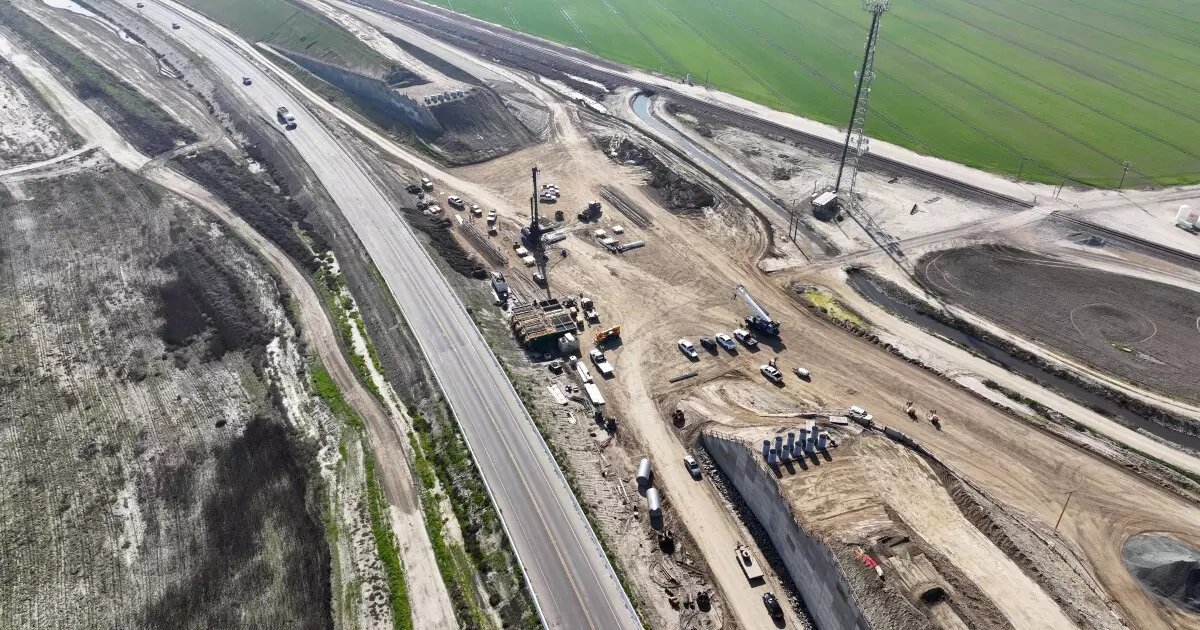The saga of California’s high-speed rail project epitomizes governmental mismanagement and misplaced priorities. While the promise of a cutting-edge transportation system fueled voter enthusiasm decades ago, reality has consistently fallen short of these lofty ambitions. The recent decision by the Trump administration to terminate $4 billion in federal funding exposes the systemic flaws embedded within this project. It underscores a critical truth: taxpayer dollars should not be poured into a project riddled with delays, budget overruns, and unfulfilled promises. Despite numerous attempts to justify continued investment—and dismiss criticism—the project’s track record betrays a pattern of incompetence and overoptimism.
For years, the California High Speed Rail Authority (CHSRA) has painted an overly optimistic picture, projecting ridership that defies logic and cost estimates that have ballooned astronomically. The initial vision of connecting Los Angeles to San Francisco for around $33 billion has all but dissolved into a nightmare costing over $128 billion and expanding. This mismanagement is not merely a matter of occasional overruns but a systemic failure that reflects a deeper political and administrative inability to deliver on foundational commitments. The latest withdrawal of federal funds is not just a bureaucratic move; it signals a shift in accountability—federal officials are refusing to continue funding a project that cannot demonstrate credible progress or financial stability.
The False Hope of Repair and the Shift Toward Private Investment
In response, the CHSRA claims that additional state-based funding, particularly through California’s cap-and-trade program, will sustain the project without federal aid. But this is shortsighted. Relying solely on increased state sources, especially amid broader fiscal pressures, glosses over fundamental issues: the continued failure to meet project deadlines, correct underestimations of costs, and the overinflated ridership projections that have repeatedly been proven false. It’s one thing to argue that public investment should be renewed in promising infrastructure; it’s another to ignore the extensive track record of delays and mismanagement.
Data reveals that the project’s leadership overpromised its capabilities, fostering false hope among the public and stakeholders. The claim that federal grants were “illegally” rescinded is a deflection—these grants were conditional, tied to performance and compliance—conditions that the project has repeatedly failed to meet. The federal government, through the FRA, acted based on detailed reviews exposing structural flaws in project management and financial planning. This is not a trivial administrative action but a necessary correction of misallocations of public funds. The push by the state to continue seeking private investment is, at best, a recognition of the project’s unviability and, at worst, a desperate attempt to salvage a sinking ship using external funding that is unlikely to materialize.
The Political Divide and the Responsibility of Leadership
Governor Gavin Newsom’s rhetoric frames federal withdrawal as an attack and an infringement on California’s hopes for innovation. However, this narrative oversimplifies a complex issue rooted in accountability. The project lost credibility long ago amid false promises and escalating costs. Newsom’s insistence that “all options are on the table” to fight what he calls an “illegal” federal action is more about political rhetoric than substantive reform. The truth is, the project’s failure is a testament to poor planning, lack of oversight, and a disconnect from economic realities.
President Trump’s critical comments—calling it a “boondoggle”—resonate with fiscal conservatives who have long viewed the project as a symbol of government overreach and reckless spending. Meanwhile, the project’s supporters cling to dreams of a modern transportation juggernaut, ignoring the massive financial and logistical obstacles. It is a reflection of broader political culture: ambitious ideas often outstrip practical execution, especially when driven more by ideological fervor than by thorough analysis.
This ongoing debate illuminates a deeper question about the role of government in infrastructure. Is it the state’s responsibility to create grand projects at any cost, or should there be a more pragmatic approach that emphasizes transparency, fiscal responsibility, and accountability? The high-speed rail’s failure warns us that unchecked enthusiasm, fueled by political agendas rather than sound economics, results in waste and disillusionment.
The California high-speed rail project offers a cautionary tale for all who place unwavering faith in government-led mega-projects. While innovation and ambition are essential for progress, they must be balanced with rigorous oversight, honest assessments, and a clear-eyed understanding of fiscal limits. Continuing to funnel billions into a project that cannot realistically meet its goals jeopardizes broader public trust and undermines genuine efforts to modernize infrastructure. It is time to reconsider the priorities—favoring responsible investment over reckless dreams—and acknowledge that not every visionary plan is worth the taxpayer’s sacrifice.

